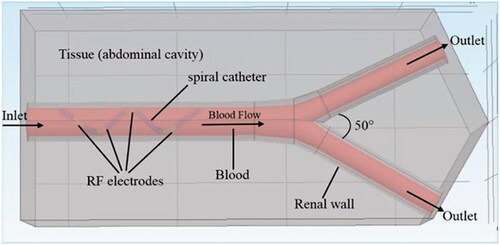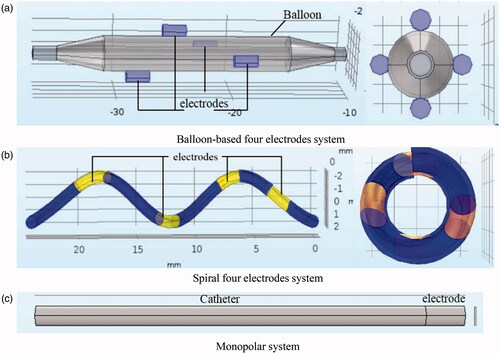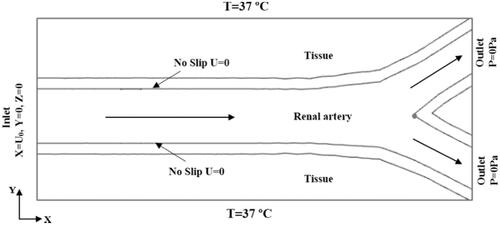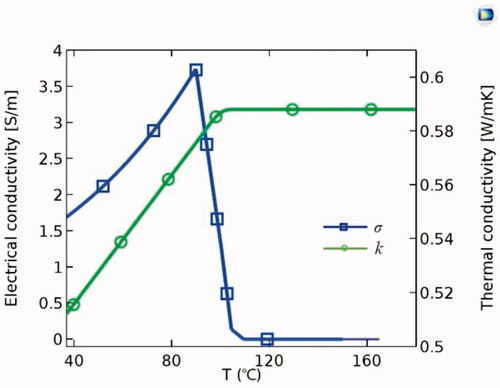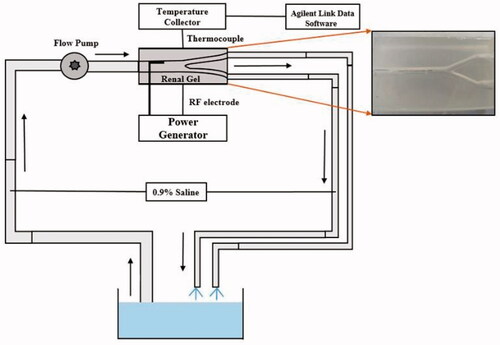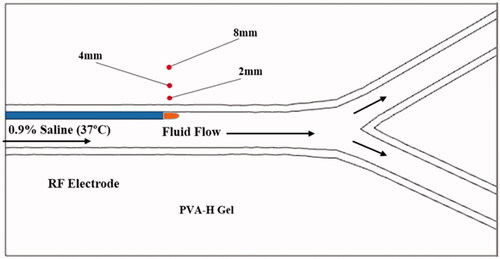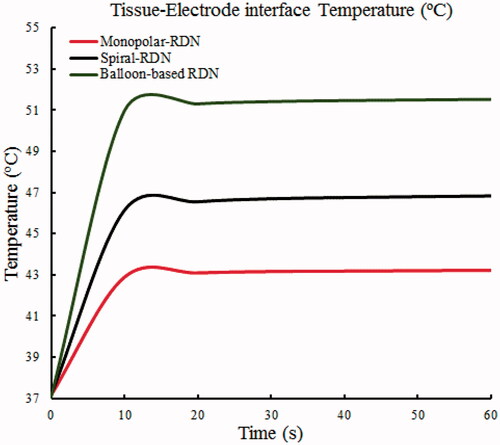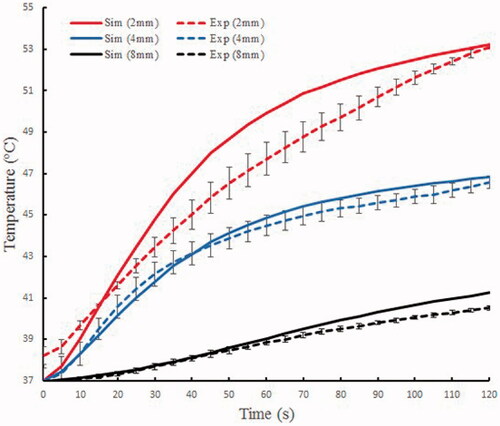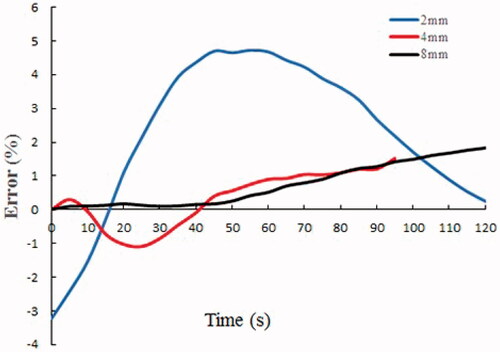Figures & data
Table 1. The electrode sizes with three-electrode configurations [Citation7,Citation24,Citation25].
Table 2. The thermo-electric and fluid properties [Citation17,Citation26,Citation27].
Figure 6. Illustration of lesion size using the different applicators. (a) Balloon-based RDN, (b) spiral RDN, (c) Monopolar-RDN, and (d) Lesion angle.

Figure 9. Temperature distribution in tissue using different RF applicators. (a) The balloon-based system, (b) spiral system, (c) monopolar system.
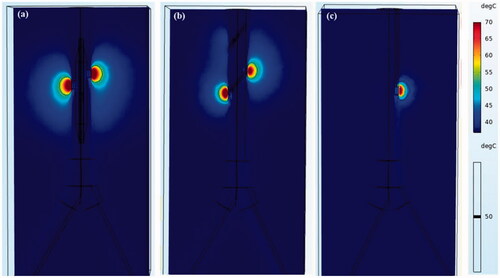
Figure 10. Maximum lesion depth and width curves of three applicators with heating time. D: Maximum lesion depth; W: Maximum lesion width. (D1, W1: for balloon-based RDN. D2, W2: for spiral RDN. D3, W3: for monopolar RDN).

Figure 11. Temperature field in the short-cross section after RDN for three applicators (P = 8W) (a) balloon-based system, (b) spiral system, (c) monopolar system.

Table 3. Lesion size after RDN for three different applicators (P = 8W).
Figure 13. The velocity and lesion zone distribution of renal artery before and after RDN. (a) Before RDN, (b) Balloon-based RDN, (c) Spiral-RDN, (d) Monopolar-RDN.
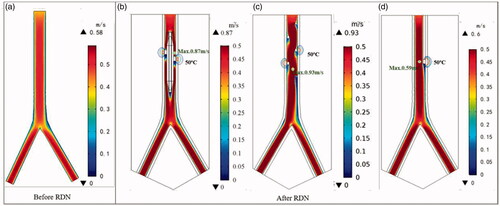
Figure 14. The blood velocity change after RDN with different electrodes. (a) Peak velocity (b) average velocity.
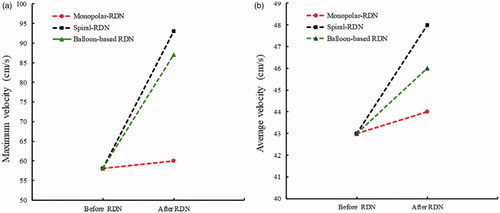
Table 4. Coagulation zone information for each applicator design.

